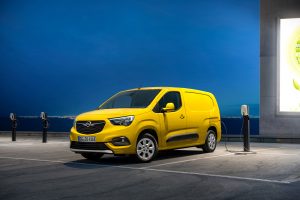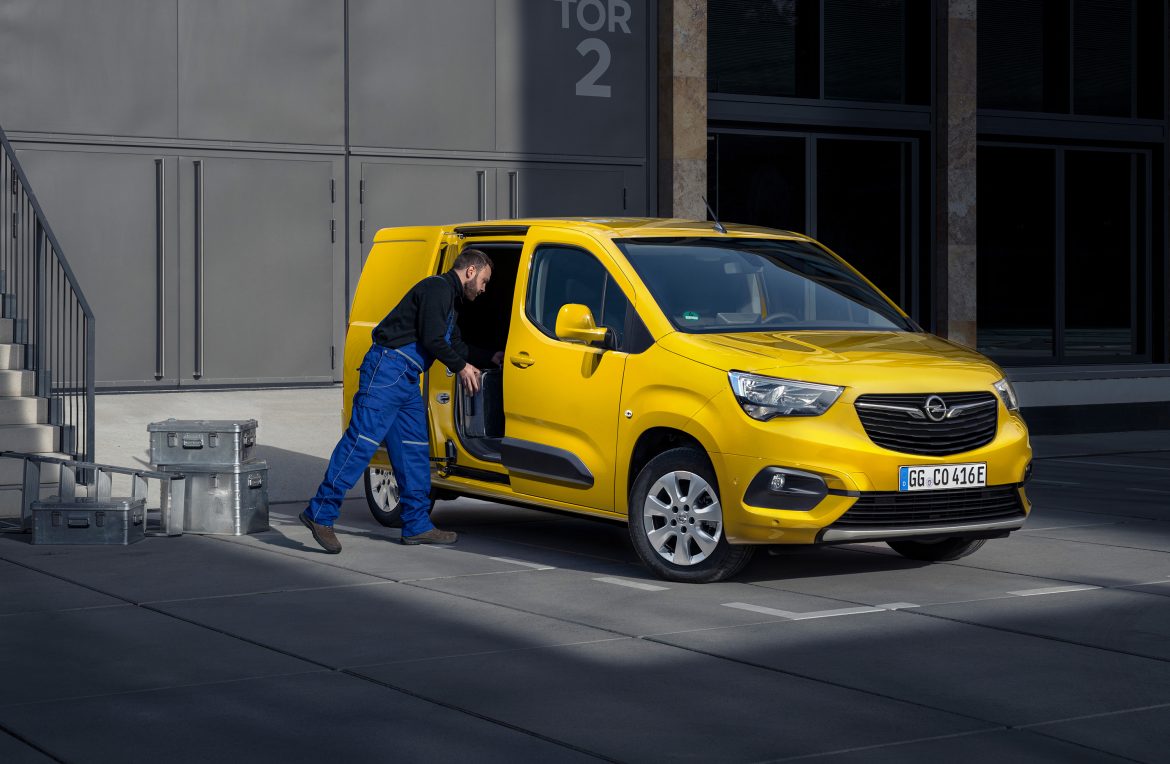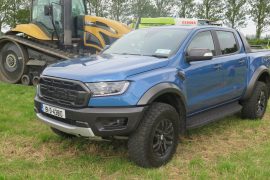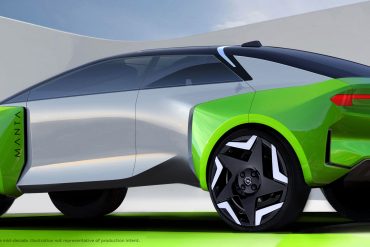Opel has revealed the first photos of the all-new, 100% electric, Opel Combo-e light commercial vehicle. Joining its Combo petrol and diesel engine siblings, voted International Van of the Year 2019 and Irish Van of the Year 2020, the zero-emission compact van makes no compromises on functionality, comfort or safety.
Boasting a range of up to 275km from a single charge, the new Combo-e offers up to 4.4m3 cargo space and 800kg payload and is available in two lengths. It arrives in Ireland in late 2021. Prices and final equipment will be announced closer to launch.
Michael Lohscheller, Opel CEO, said: “The all-electric Opel Combo-e will enable compact van users to work in urban areas while transporting the highest payload and towing the heaviest weight in the class. The Combo-e continues the expansion of our zero-emission light commercial vehicle offer that began late last year with the Vivaro-e, just crowned International Van of the Year 2021. By the end of 2021 we will also launch the Movano-e, thus electrifying our entire LCV portfolio.”
The newest addition to Opel’s all-electric LCV portfolio is available in two lengths. The 4.40m long Combo-e, which has a wheelbase of 2,785mm and can carry objects up to 3,090mm long, offers payloads of up to 800kg and cargo volumes of 3.3 to 3.8m3. It has a towing capacity of 750kg, class-leading in its segment. The 4.75m extra-long XL-variant has a wheelbase of 2,975mm and a cargo volume of up to 4.4m3 that can accommodate objects up to 3,440mm in length. Six tie rings on the floor (with the option of four more at mid-height) help keep everything in its place.
Based on the extra-long XL-variant, the crew van version comfortably seats up to four passengers as well as the driver, while cargo or equipment is safely stowed away behind the partition wall. Thanks to a flap in the wall, the transportation of long items is still possible.
The new Combo-e covers up to 275km on a single charge of its 50kWh lithium-ion battery (WLTP2). Depending on the model variant, the Combo-e accelerates from zero to 100 km/h in only 11.2 seconds, while the electronically controlled maximum speed is 130 km/h; the perfect balance for urban and motorway driving. A sophisticated regenerative braking system with two user-selectable settings further increases efficiency. Customers can “refill” the battery to 80 per cent in around 30 minutes at public charging stations.
The battery with 216 cells and 18 modules is packaged under the floor, so that it does not compromise usage of the cargo area or passenger compartment. In this location, the battery lowers the centre of gravity as well, which benefits cornering and wind stability even when fully loaded, while also contributing to increased driving pleasure.
Assistance systems available as standard or optional, depending on trim, include driver drowsiness alert, lane keep assist, trailer stability control, traffic sign recognition, forward collision alert with pedestrian protection and automatic emergency braking. Surround Rear Vision helps to prevent accidents with cyclists and pedestrians when making a turn, whilst the Flank Guard alert prevents annoying and costly dents or scratches. Unique in the market segment is the sensor-based load indicator that allows the driver to check, at the touch of a button, that the vehicle is not over-loaded. Professionals who need extra ground clearance and traction in mud, sand or snow can upgrade the Combo-e with the worksite pack and the IntelliGrip electronic traction control system.
The Multimedia Radio and Multimedia Navi Pro infotainment systems, available as standard or optional depending on trim, come with a large 8.0-inch touchscreen. Both systems feature phone integration via Apple CarPlay and Android Auto.

The new Combo-e will arrive at dealerships this autumn, joining the Vivaro-e as the newest member of Opel’s all-electric LCV family. The next new model, the new Movano-e, will also arrive in 2021. This means that the brand’s entire light commercial vehicle portfolio will be electric by the end of this year. Opel will offer an electrified version of every passenger car and LCV model by 2024.





